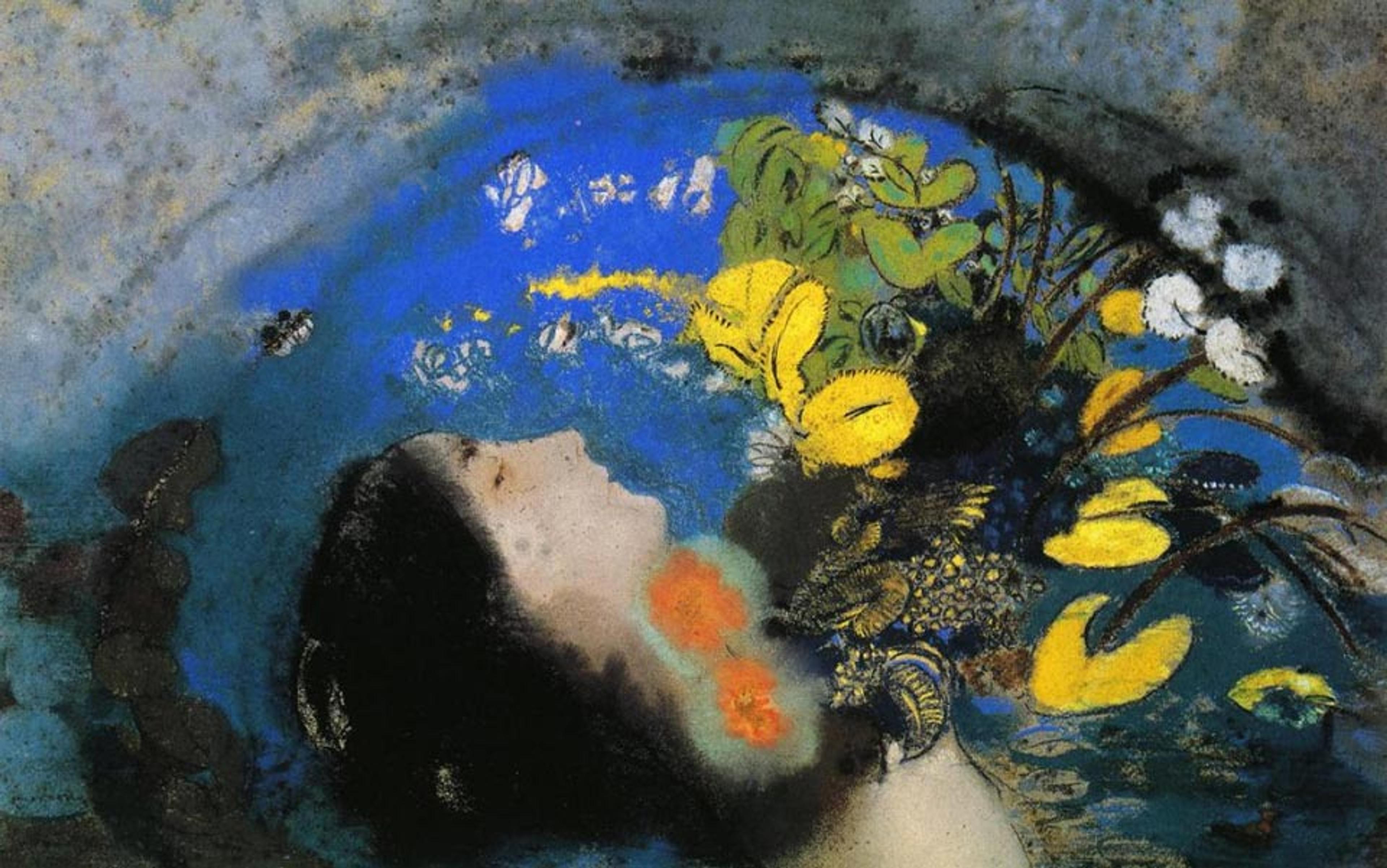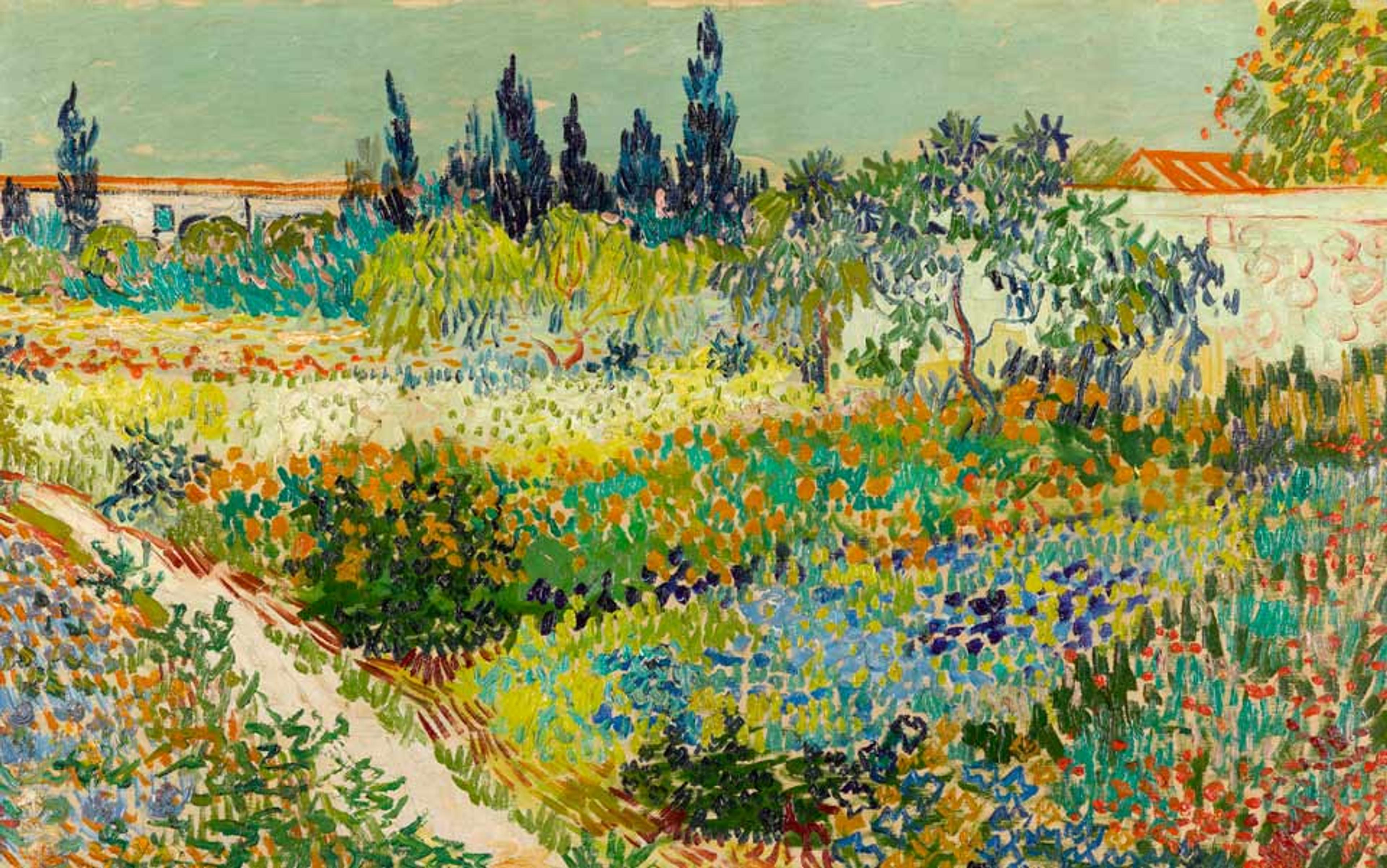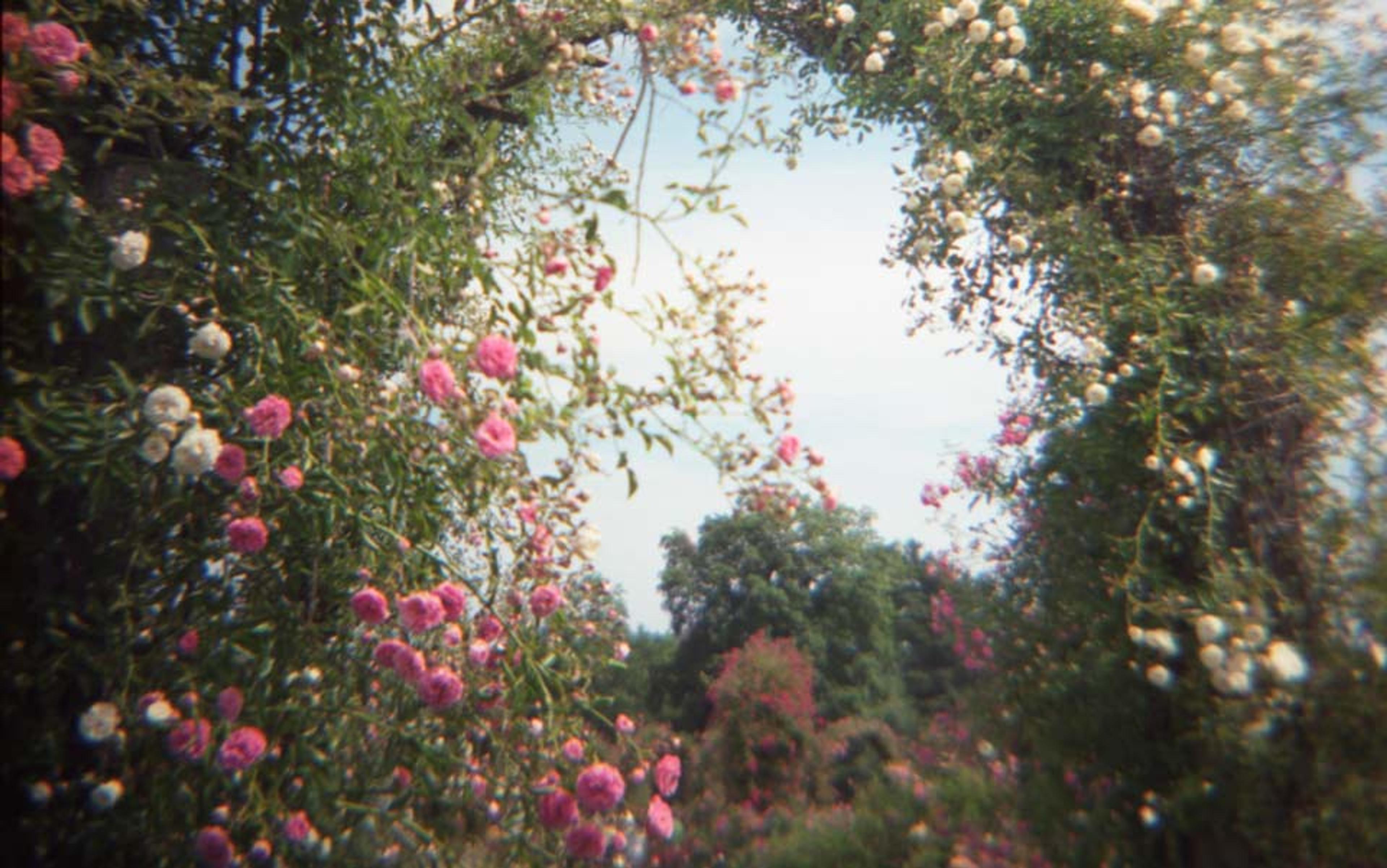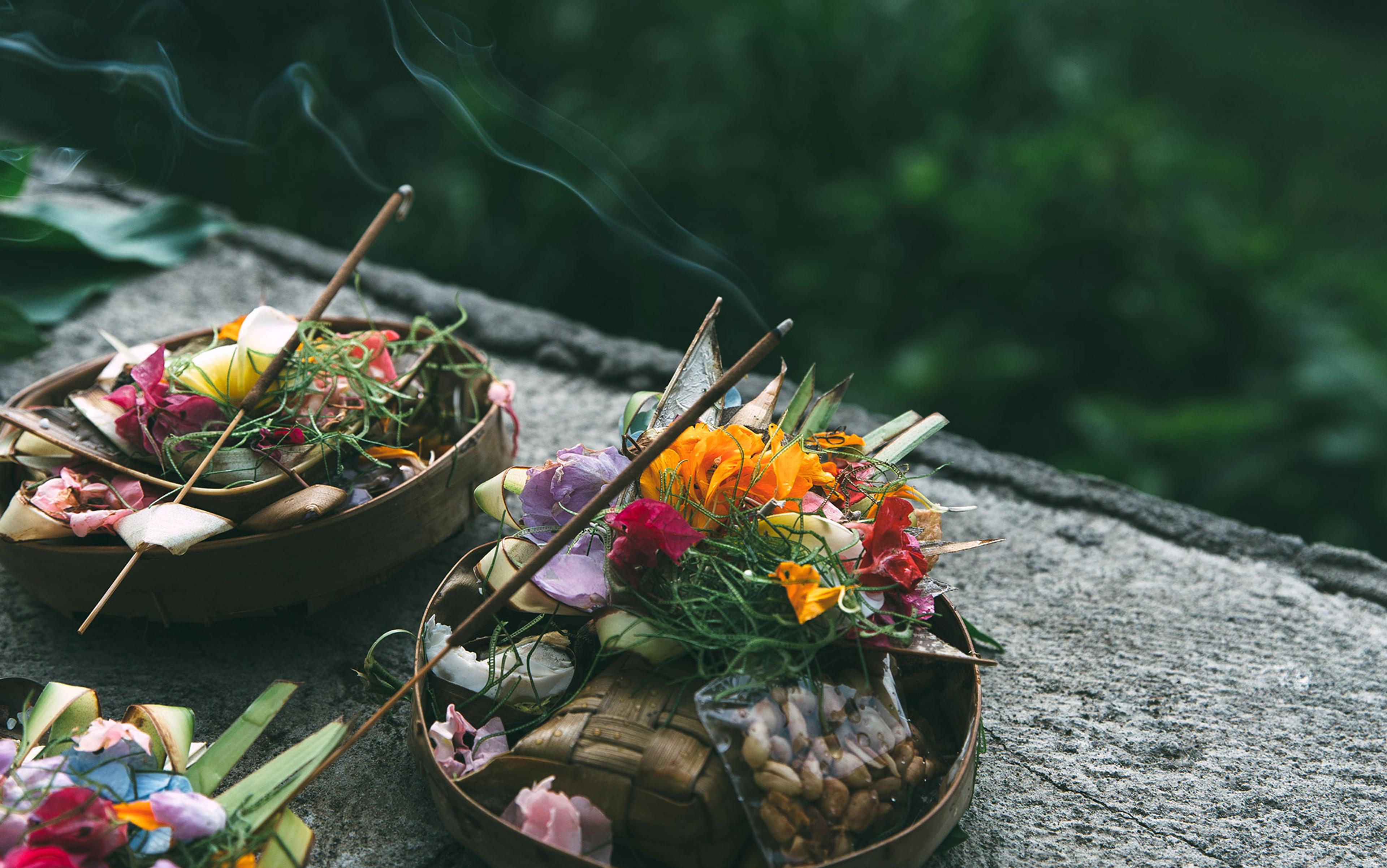We live on a flowered planet, so it’s not surprising that plants have twined their way deep into all aspects of human culture, from medicine to art. A decade ago, in a life that now seems like someone else’s, I worked as a herbalist, and in that time I thought a good deal about how our species interacts with plants. I thought about what might be described as our great obsession with growth: the vast sowings and harvestings and consumptions that go on hourly in almost every inhabited region of the world. I thought of gardens, those little dreams of Eden, and I thought too of how certain plants seem to work on the mind, not only by what we now call their active constituents but also by way of the appeal they make on our emotions and imagination.
During those green years I returned periodically to two stories, one 400 years old, the other drawn from the very beginning — the antechamber, if you like — of human history. The first is fictional, and takes place in Hamlet’s Elsinore, as everything in the not-quite-closed world of the castle falls apart. Ophelia, no longer rooted in reality, botching her words and speaking a gibberish of nursery rhymes and innuendo, does something that seems at first glance wholly indicative of her insanity. Her hands are full of flowers, and she hands them out to the assorted members of the court — to her brother Laertes, and to the king, Claudius, and to Gertrude, his new wife and former sister-in-law — saying famously:
There’s rosemary, that’s for remembrance; pray,
love, remember: and there is pansies; that’s for thoughts
…
There’s fennel for you, and columbines: there’s rue
for you; and here’s some for me: we may call it
herb-grace o’ Sundays: O you must wear your rue with
a difference. There’s a daisy: I would give you
some violets, but they withered all when my father
died: they say he made a good end…
Not long after this so-called mad scene, Ophelia tumbles into a brook while making a coronet of yet more wild flowers: this time crowflower, nettle, daisy, and a purple plant nicknamed ‘dead man’s fingers’ which scholars think might be wild arum or else an orchid of some sort. She drowns surrounded by these weedy trophies, still singing snatches of old songs. In John Everett Millais’s 1851 painting of the scene, the flowers float around her body on gin-clear water, along with poppies, pheasant eye, fritillary, and what looks to me like hawkbit.
The other story, to which Ophelia’s obsessive gathering and gifting of flowers is allied, comes much further back in time. In the late 1950s, a team of archaeologists from Columbia University excavated a site known as the Shanidar Cave in a valley in the Zagros Mountains in the Kurdistan region of Iraq. There they found the skeletons of 10 Neanderthals, some young and some very old. One was buried curled on his left side, like a sleeper or else a child in the womb. When the soil around him was examined some years later, it was discovered to be richly contaminated with pollen from an array of plants not found elsewhere in the cave system, among them yarrow, cornflower, yellow cockspur, grape hyacinth, and horsetail. It seemed that his body had been deliberately covered in flowers, in just the manner that we still dress the corpses of our beloved dead.
What strikes me about both these stories is that they encapsulate the belief that plants have meaning, that they possess a significance that is both due to and transcendent of their physical attributes. This widespread and culturally pervasive phenomenon has many manifestations. It is evident, for example, in floriography, the language of flowers, which codifies plants according to human qualities, and which Shakespeare was utilising when he made Ophelia hand out her eloquent bouquets. In this nearly extinct dialect, which lives on in scholarly supposition and facsimile Victorian gift books, fennel means flattery and columbine faithlessness, while violets stand for innocence: a code Shakespeare’s audiences would certainly have grasped.
We used Ophelia’s flowers day in, day out
The art of floriography derives from paying close attention to what plants do: to their habit and habitat; to their actions on the human body, and for this reason it might be described as a sibling of herbal medicine. Part of the reason I love those two floral, scented stories is because of my familiarity with almost all their cast of plants. I know what they look like and smell like, and I know from my practice as a herbalist that they possess a profound and hidden agency: a secret life.
It took five years to train in what had recently been renamed phytotherapy, or plant medicine, passing through modules in medicine and botany, materia medica, pharmacology, differential diagnosis, anatomy, and physiology. In addition, one had to spend 500 hours working in clinics, one of which was in pre-Olympics Stratford, in East London, where we saw mostly overweight men with diabetes and hypertension. At the end of this long period of training, I graduated and set up a practice in a clinic run by my mentor.
I can’t tell you much about yellow cockspur, daisy, columbine or grape hyacinth, but all the other plants listed by Ophelia or found in the grave-soil in Shanidar Cave were in that clinic’s dispensary in one form or another. The room was tiny and lined with shelves, on which were ranked in alphabetical order perhaps a hundred large, brown glass bottles of tinctures — the term used for alcoholic extracts of leaves, roots, fruits, and flowers. Above were tins, originally used for China tea, containing the dried herbs we’d weigh and mix as tisanes or infusions, using an old-fashioned pharmacist’s scale and little palmable weights of five, ten and twenty grams. Unsurprisingly, the room had a strong and distinctive odour, made up of mixed elements of lavender and chamomile, liquorice, pungent valerian, and the resinous, bitter scent of myrrh.
We used Ophelia’s flowers day in, day out. Rosemary, Rosmarinus officinalis, was deployed as a kind of mild stimulant, to sharpen the mind and improve concentration and circulation. Pansies, Viola tricolor, I mixed most often for childhood eczema. Fennel, Foeniculum vulgare, that marvellous aromatic and carminative (aid to digestion), which was likewise good for promoting milk flow (an action known as a galactagogue), and gentle enough to be taken by a child.
Did we have rue, Ruta graveolens, which flowers a sour yellow and stands in floriography for both regret and the grace of God? I don’t remember. I certainly studied it. It grew in my boyfriend’s garden, and I once idly mashed a leaf back and forth between my fingers. The next day there were red weals and pustules all over my hand, which itched and burned for almost a week. Like many dangerously toxic plants, it had been used traditionally as an abortifacient (‘It expellethe the dead childe,’ wrote Gerard in his Herball of 1633) and so became associated in folk memory with regret, especially in women. This is why Ophelia gives it to Gertrude, Hamlet’s mother: a statement of disgust masquerading as respect.
As for the herbs in Shanidar Cave, we used cornflower, Centaurea cyanus, as an anti-inflammatory, and horsetail, Equisetum arvense, for joint disease. But it was the presence of yarrow, Achillea millefolium, that made the story an especial favourite with herbalists. Most have an affection for this unassuming wayside plant, which produces tiny pink, pale-pink or white ray and disk flowers that grow together in flattened heads known as inflorescences. Its traditional names — soldier’s woundwort, staunchweed, nosebleeds and sanguinary — gesture towards its reputation as a vulnerary and astringent, a plant that stems bloodflow and heals wounds. Yarrow is also anti-inflammatory and an efficient diaphoretic (it brings on sweating), useful in conditions as seemingly diverse as bronchitis, dysmenorrhoea (painful periods), hypertension, and varicose veins.
the passing of any substance from one person to another in order to alleviate pain is on some level a magical transaction
At the time, herbal medicine was passing through one of its periodic phases of modernisation, ditching the hippy-dippy rhetoric of the 1960s and ’70s in favour of a clinically verifiable, evidence-based approach. On my course, which was the first bachelor’s degree in the subject, we studied pharmacology and pharmacodynamics; memorising active constituents and the ways they interacted in the body. We discussed double-blind trials and herb-drug interactions. Every herbalist of my generation knows that St John’s Wort, Hypericum perforatum, a plant used to treat anxiety and depression, activates the sub-enzymes of the cytochrome P450 enzyme complex, potentially altering the rate at which other drugs are metabolised.
Often, this newly technologised approach both supported and explained traditional therapeutic usage. Take the humble nettle, which Ophelia wound dreamily into her coronet before tumbling into the river. In folk medicine, it was used as a blood purifier and tonic. A tea made from the leaf could be applied topically to heal wounds, burns and inflammation of all kinds, or taken internally to treat diarrhoea or dysentery.
On the same subject, the new bible of the evidence-based era, Principles and Practices of Phytotherapy (1999) by Kerry Bone and Simon Mills, states: ‘The nettle leaf extract and caffeic malic acid (the major phenolic component of the extract) showed partial, concentration-dependent inhibition of both cyclooxygenase and 5-lipoxygenase-derived reactions.’ The same tune, with different words.
I can’t speak for all herbalists, but I was never wholly comfortable with this kind of reductive language, not because I was leery of the science, but because I wasn’t certain that the ability to isolate and name ever smaller components really answered the larger question of what herbs do in the body. Herbal medicine is by its nature complex. Each plant contains a multitude of active constituents — alkaloids, saponins, tannins, glycosides, mucilages and so on, which are supposed to act in concert, supporting and buffering one another. Furthermore, a herbal prescription may combine five or six different herbs into a single remedy, which might change subtly or entirely at every subsequent appointment. By contrast, pharmaceutical medicine tends to use a single active constituent, designed to treat a single symptom in isolation.
But the complexity of herbs as medicine goes far beyond the physical. In a way, this is true of all drugs, since the passing of any substance from one person to another in order to alleviate pain is on some level a magical transaction. Yet herbal prescriptions are supposed to work magic in a way that antibiotics are not intended to do. In addition to their active constituents, they are expected — or so my patients seemed to hope — to carry out a deeper kind of healing: to make the patient well, but also to rebalance or restore them in their relationship with nature. Generally, this unspoken appeal was to nature in its exclusively benevolent and healthful aspect, though there is nothing unnatural about being ill. Herbs offered the promise of increased vitality, connection or rootedness by association, a sympathetic magic that is also visible in our attitudes to organic food.
this revelation of what I can only describe as a terrifying complexity gave me a kind of vertigo
Then, too, there is what plants carry with them: a cargo of history, a freight of cultural associations. In swallowing a tincture of nettle and rosemary, or fennel and sweet violet, one extends one’s identity as a human beyond the mechanised and industrialised world. One claims kinship through the centuries. There’s a comfort in that: in engaging in the same unchanging practice as an Elizabethan villager, or Shakespeare; in recognising one’s similarity to a nameless Paleolithic man who spoke, if he spoke at all, a language we will never be able to understand, and yet who shared with us a susceptibility to the lovely flowers of the field that join our time to his.
I stopped working as a herbalist for many reasons. My mentor at the time had begun to practice ‘terrain medicine’, also known as endobiogenics, or the neuroendocrine theory of the body or ‘terrain’. Established in France by two oncologists, Dr Christian Duraffourd and Dr Jean-Claude Lapraz, it was a system of breathtaking complexity. It took the locus of both illness and treatment to be the endocrine system, which manages the functions of the body rather as a conductor commands an orchestra.
I found this system both fascinating and bewildering, not least because most of the papers were written in French. Over time, though, it began to paralyse me. My training had, despite its insistence on holism, used almost exactly the same mechanical model of sickness and health as conventional medicine, in which organs and systems are considered in virtual isolation from each other. In the terrain model, everything was connected. The body was understood as a vastly dynamic system, into which herbs could trigger far-reaching change. Forget rosemary for remembrance. Now it was rosemary as a sympathomimetic, to treat vagotonia (or hyperexcitability of the brain’s vagus nerve), which might manifest as chronic bronchitis or as colitis, as warm extremities or as pancreatic insufficiency, or as pelvic congestion, especially of the prostate.
It was too much for me. I began to feel that I didn’t understand what I thought I had long since grasped: how the body works, in both sickness and in health. This revelation of what I can only describe as a terrifying complexity gave me a kind of vertigo. Gradually, I began to realise that my interest in humans and plants was not about trying to effect change, but trying simply to observe. It was then that I began to take writing seriously, to move away from medicine.
If I’d still been invested in a straightforward, triumphalist approach to herbal medicine, I might have been disappointed by something I discovered a long time after I closed my practice. When the team of archaeologists who opened Shanidar Cave first discovered the pollens in the soil around the skeleton of the Neanderthal man known as Shanidar IV, they assumed that what they were seeing was an elaborate burial ritual, particularly because the plants identified were known to be medicinal. Indeed, Ralph Solecki, who led the team, later titled his book on the find Shanidar: The First Flower People (1971), and wrote: ‘Someone in the last Ice Age must have ranged the mountainside in the mournful task of collecting flowers for the dead… It seems logical to us today that pretty things like flowers should be placed with the cherished dead, but to find flowers in a Neanderthal burial that took place about 60,000 years ago is another matter.’
However, it seems the team might have made the common mistake of regarding the past through the lens of their own times. Researchers at the University of Michigan in Ann Arbor now suspect that the pollen could have been introduced by the wind, or perhaps by the Persian jird, a little dust-coloured desert rodent, which caches seeds and grains in its burrows, and which also inhabited the cave.
I confess to finding this story pleasing, not disappointing. It exposes the depths of our fantasies about people and plants, showing how pattern-driven we are, and how addicted to stories. At the same time, it reveals the baffling complexity of the natural world, its resistance to understanding. No matter what meanings we ascribe to them, plants maintain their mystery. I might not handle them daily anymore, but I like to think of them growing in the fields and waysides of the world: rue and cockspur, nettle and rosemary, rising from the soil year after year to spell out a code we may not ever completely crack.






